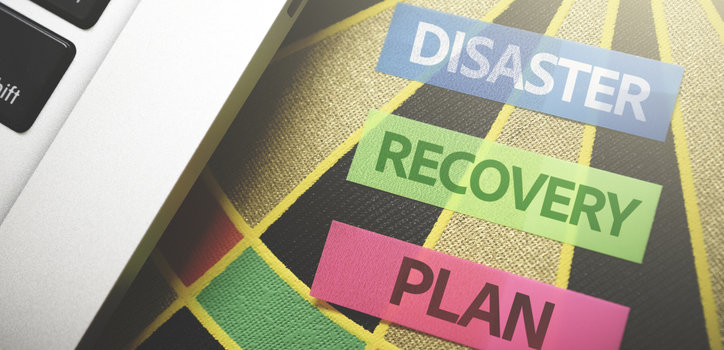Disaster recovery is something you must plan for, but hope never happens. What’s critical in developing a strategy is minimizing disruption as much as possible. One of the most important components of a recovery plan is your contact center. Your customers need to be able to reach you, no matter the circumstances. If you haven’t considered contact center disaster recovery yet, we’ve got tips, ideas, and more for you in this guide.
Is a Disaster Inevitable?
Many factors can cause outages for businesses, and it’s crucial to plan ahead for such scenarios. A 2019 study revealed that 96 percent of organizations experienced at least one outage in the past three years. While the causes are varied, some are more common than others:
- Natural Disasters: These events are unpredictable and can have widespread impacts on business functions. A business continuity plan (BCP) should include redundant facilities in different geographical regions to minimize downtime.
- Hardware Failures: These are more frequent with on-premises systems, where the business owns and maintains the servers. Cloud-based systems, on the other hand, provide multiple hosting options to mitigate this risk and ensure continued connectivity.
- Cyberattacks: Increasingly common, cyberattacks such as ransomware can disrupt call center operations. In 2021, businesses reported an average of 22 down days due to cyberattacks, causing significant business disruption and data loss.
The goal of your disaster recovery plan is to prevent downtime while minimizing the business impact analysis (BIA) to your call center. By identifying and addressing potential risks and recovery procedures, you can be better prepared.
What Can a Disaster Cost You?
A disaster scenario can be costly in both tangible and intangible ways. A 2022 study concluded that an average outage is 78 minutes with a cost of $88,000 per hour. In addition to the financial toll, losing customer connectivity for even a short period can severely damage your customer experience and reputation.
To mitigate these risks, you must include not only recovery but also business continuity in your disaster recovery plan. Continuance means you’re still able to serve your customers during and immediately after an incident. It’s vital to ensure that customer support remains available, even if disaster strikes.
Designing Your Contact Center Disaster Recovery Plan
A well-developed recovery process begins with understanding the unique needs of your contact center. Whether your center is on-premises or in the cloud, a recovery plan must be tailored accordingly. Let’s look at what your disaster recovery plan should include:
- Identify All Emergency Scenarios and Their Impact: A business impact analysis (BIA) will help you assess the most significant risks to your business functions, such as power outages, cyberattacks, or even physical damage to your data center. A power outage due to a natural disaster may be a brief interruption, but a prolonged cyberattack could have far-reaching consequences.
- Develop a Crisis Communication Plan: This is key to ensuring that internal and external communication channels remain open. The plan should outline how your team members, customers, and partners will stay informed during a disaster.
- Assign Roles for Recovery and Continuance: Different team members play critical roles during recovery. By assigning specific roles for handling recovery solutions, you ensure that your disaster recovery team can act swiftly and effectively.
- Document Recovery Strategies: Your strategy should outline immediate actions as well as long-term recovery procedures. For instance, if your phone system is down due to a power outage, your plan should include failover options like call routing through mobile devices or alternate locations.
- Train Your Team Regularly: Ongoing training on the recovery process and business operations ensures that team members know their roles and can quickly mobilize in case of disaster.
- Test Your Plan: Regular testing of your recovery procedures, including simulations of different types of disasters, helps identify weaknesses and improves your overall strategy.
Focusing on Continuance with the Cloud
Cloud-based contact center solutions are far more resilient in the face of disaster. When disaster strikes, your team’s ability to continue operations hinges on the flexibility and redundancy of your platform. Here’s why cloud solutions offer superior disaster recovery:
- No Impact from Local Power Loss: Cloud solutions are hosted on data centers with multiple failover systems, ensuring that power loss at your physical location doesn’t impact operations. Your team members can log in from any location with internet access, minimizing downtime and ensuring business continuity.
- Accessible and Redundant: Cloud-based platforms are built with redundancy in mind. If one data center is impacted, another takes over seamlessly, ensuring that your recovery point objective (RPO) is met. This is particularly crucial for maintaining customer support operations during disaster scenarios.
- Mobile Device Support: Using mobile devices to access your cloud system means that your contact center can continue operating even when traditional office infrastructure is down. This gives your team flexibility to maintain communication with customers during emergencies.
- Partnering with a Reliable Service Provider: Choosing a service provider with robust redundancy plans and high uptime availability is critical. Look for a provider with strong disaster recovery features, including real-time data backup, data center redundancy, and effective security measures to ensure that customer support remains unaffected.
Be Ready for Contact Center Disaster Recovery with the Right Solution
The right disaster recovery solution ensures both recovery and continuance of your contact center operations. A cloud-based system offers advanced capabilities to recover from various types of disasters. With a 99.999% uptime guarantee, our platform ensures that your contact center remains operational even during unexpected events.
Key features include:
- Built-in Data Backup: Automatic data backups ensure that you can recover important information without losing critical customer data.
- Seamless Failover and Call Routing: In the event of system failures, calls can be routed to a backup location or to mobile devices, ensuring minimal disruption.
- Robust Security Protocols: Our platform offers continuous threat monitoring, data encryption, and a dedicated disaster recovery team to respond immediately in case of any disruption.
While you can’t predict every type of disaster, a well-designed disaster recovery plan can mitigate the risks and minimize downtime. Learn more about our contact center solution today.
March 12, 2025
Explore other posts on these topics: Contact Center





